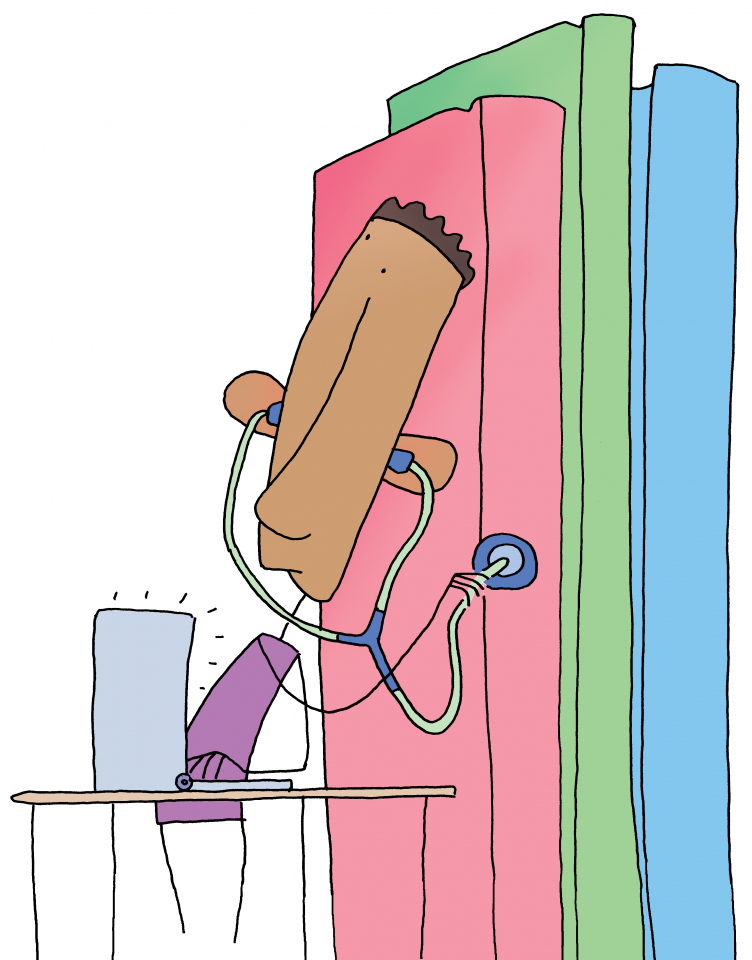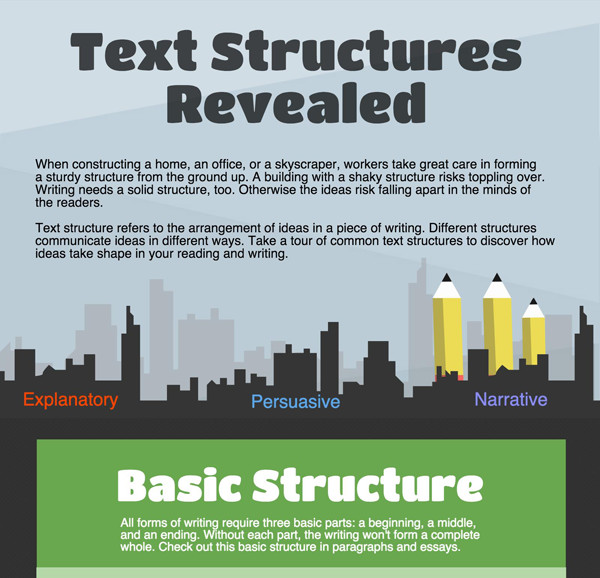
Research has shown students to improve as readers and writers when both skills are taught in tandem.
One way to connect reading and writing in your classroom is through an instructional strategy called Read STOP Write. (STOP stands for Summarize, Text structure, Organize, Plan.) This method helps students identify common text structures when reading and apply the structures to their writing.
Educator John Z. Strong introduced the strategy and its promising results in a recent issue of Literacy Today.
Read STOP Write asks students to complete six steps:
- Read: Identify the main point and supporting details of a text.
- Summarize: Write a single sentence that captures the main idea and key details.
- Text structure: Identify how the author organizes the main idea and details.
- Organize: Use a graphic organizer to arrange the details.
- Plan: Use the same graphic organizer to gather original details about the same topic.
- Write: Develop a paragraph using the same text structure to explore the same topic.
You likely have experience teaching students how to identify a main idea and supporting details (steps 1 and 2), but you may be less familiar with how to teach text structures (steps 3–6).
What are text structures?
Text structures are the ways writers organize their ideas. Common text structures include compare-contrast, cause-effect, problem-solution, and so on.
Building awareness of text structures is shown to boost reading comprehension and help students organize ideas effectively when writing.
How can I teach text structures?
The Read STOP Write method brings text structures into focus, but students may need extra support with finding and using different structures.
Show students the "Text Structures Revealed" infographic to teach common patterns in explanatory, persuasive, and narrative writing. Students can refer to the infographic as they complete the following activity.
Featured Activity: Spot the Text Structure
Click to view the full infographic.
Teacher Support
Consider this support when teaching the Read STOP Write method.
Level
4–8
Learning Objectives
- Closely read for main ideas and supporting details.
- Closely read for text structures.
- Understand common text structures and why writers use them.
- Use graphic organizers to analyze the details in readings.
- Use effective text structures in writing.
Teaching Tips
- Repeat the Read STOP Write method for multiple weeks with many different readings.
- Use scaffolding strategies to work toward independence:
- Model the steps of the strategy.
- Lead a whole-class collaboration for each step.
- Have students complete the steps in small groups or pairs.
- Finally, have students complete the steps independently.
- Show students how to use graphic organizers for sorting out text structures.
- Instead of having students write summary paragraphs, modify the final two steps to have them write original paragraphs:
- 5. Plan: Use the same graphic organizer to gather original details about a new topic.
- 6. Write: Develop a paragraph using the same text structure to explore your new topic.

